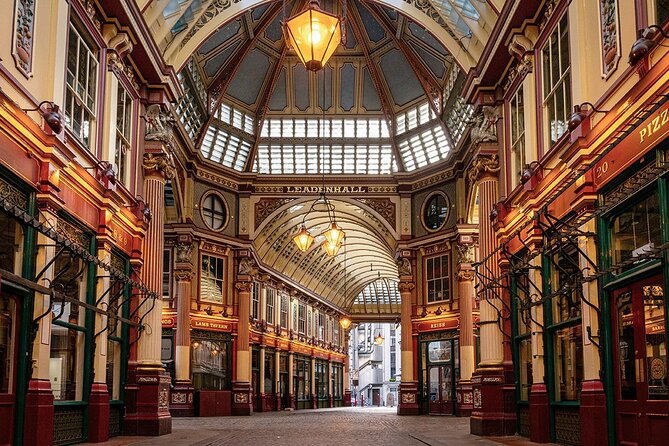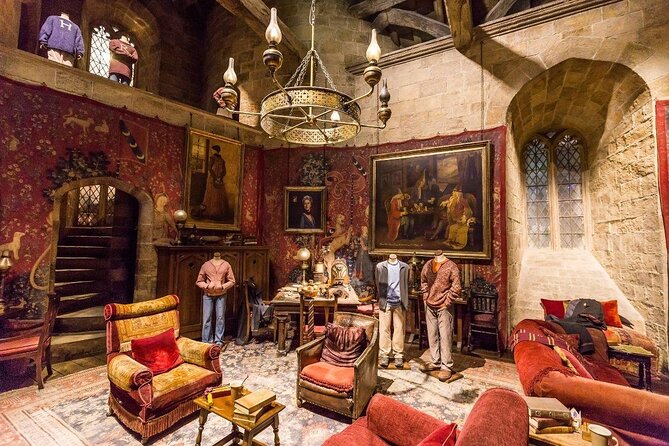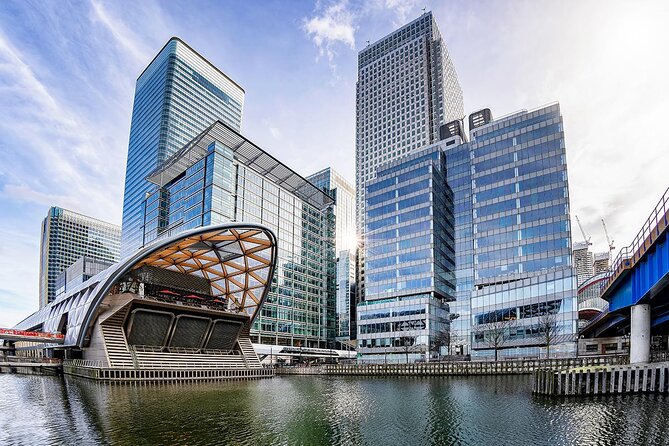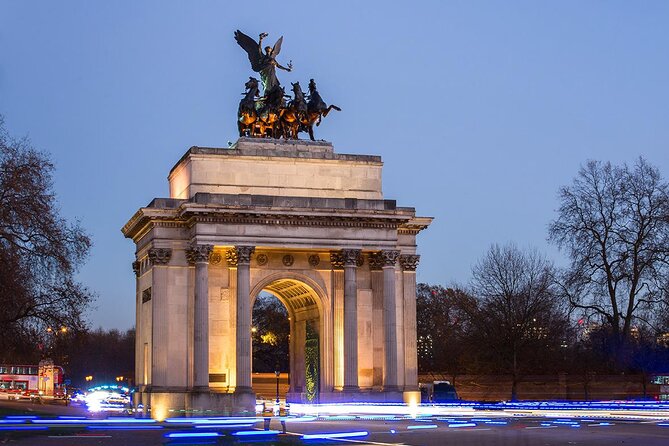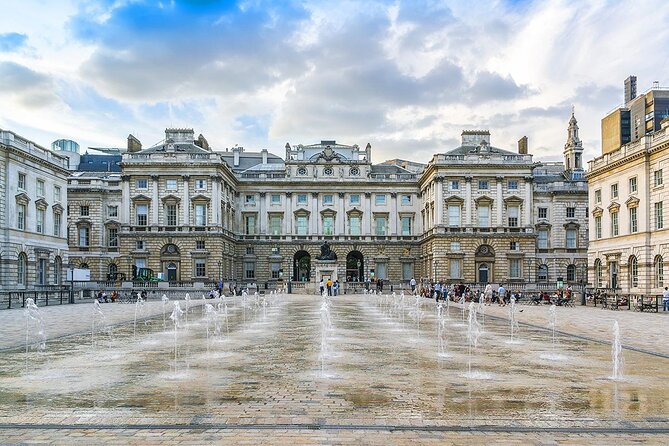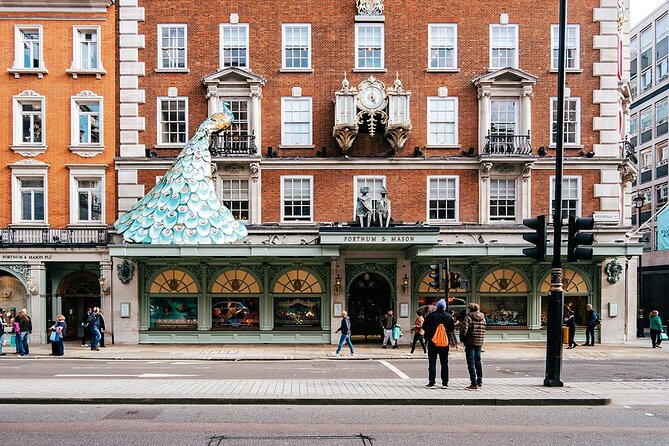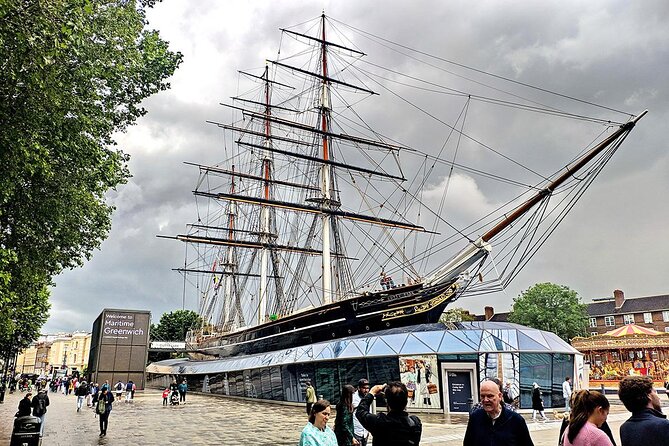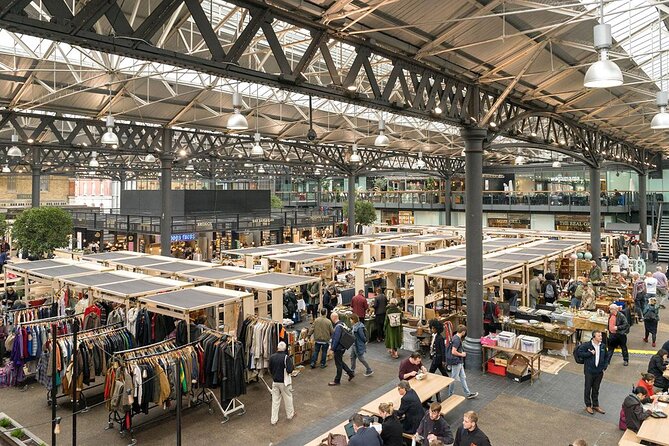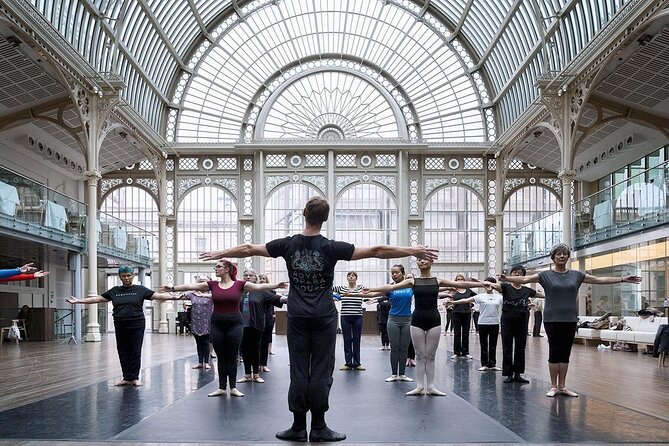Day Tours and Attractions
Leadenhall Market
Leadenhall Market itself dates back to the 14th century, while its City of London location has links to Roman Londinium (AD 43). The ornate structure of today was designed by Sir Horace Jones in 1881, though the market has since swapped meat trade for modern retail, and adopted an alter ego as Diagon Alley in the Harry Potter film series.
Embark on a magical journey into the world of one of the most beloved film series ever at the Warner Bros. Studio Tour London – The Making of Harry Potter. Wander through iconic sets like Diagon Alley, Dumbledore’s office, and the Great Hall. Uncover behind-the-scenes secrets and marvel at the special effects that brought the wizarding world to life. Take in an impressive collection of costumes, legendary props, and interactive exhibits that make the magic even more real.
Canary Wharf, once a bustling docklands area, has emerged as one of London’s most influential financial hubs. Today, alongside the City of London, it stands as a central business district that drives the capital’s economy. Its stunning skyline, filled with modern skyscrapers, highlights its transformation into a global powerhouse.
Built to celebrate British victories over Napoleon, Wellington Arch served as London’s smallest police station before being handed over to English Heritage and opened to the public. Exhibitions document its construction, while an open-air viewing gallery offers views over Hyde Park and the queen’s back yard, aka Buckingham Palace gardens.
Once a Tudor palace, Somerset House was redesigned by Sir William Chambers in 1776 as part of the city’s infrastructural improvements. Now a creative and cultural hub offering shows and activities year-round, the building is also known to have appeared in the Sherlock Holmes and James Bond films, among others.
Fortnum & Mason Tours and Tickets
Fortnum & Mason is one of London’s most iconic and best-known department stores. Set on Piccadilly Street, it has been a key local shopping destination since 1707, but it’s also a must-see for visitors who want to peruse luxury goods, enjoy a traditional English afternoon tea, and purchase souvenirs.
Now permanently docked in Greenwich, London, this 19th-century tea clipper—one of the fastest vessels of its era—once sailed the seas between Britain and China. Onboard exhibitions and costumed characters document what life was like for the crew as they steered the ship to ports all around the world.
Graffiti-lined Brick Lane has long been an immigrant neighborhood, having hosted French Huguenot, Irish, Jewish, and—most recently—Bangladeshi communities. The string of curry houses at its southern end specialize in Indian and South Asian cuisine, while farther north, retro clothing shops, cafés, and bars dominate the scene.
Established in the 1860s, Old Spitalfields Market is a historic market that is still bustling today. The covered marketplace is full of stalls offering a mix of chain restaurants and local street food as well as unique, locally designed goods, imported wares, vintage clothes, handmade jewelry, and all manner of quirky items.
The third theater to have stood on this Covent Garden site, the Victorian-era Royal Opera House (ROH) was given a major facelift at the turn of the 21st century. The landmark venue now hosts performances by two of the United Kingdom’s most prestigious companies: the Royal Ballet and the Royal Opera.

